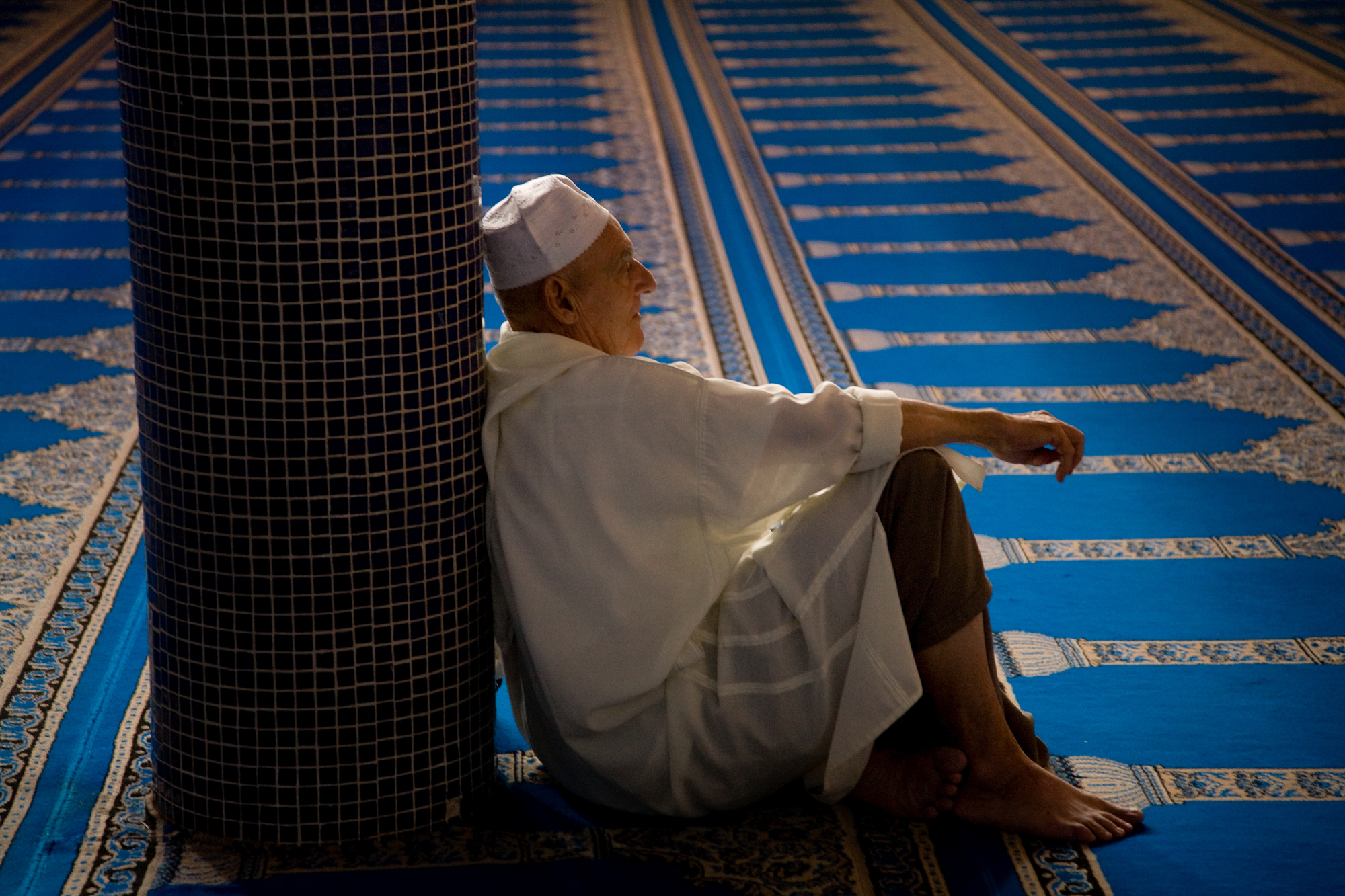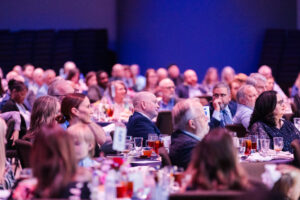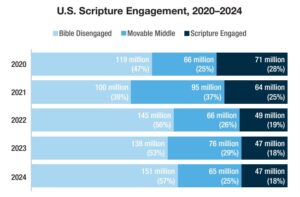
EDITOR’S NOTE: The Lottie Moon Christmas Offering supplements Cooperative Program giving to support more than 5,600 Southern Baptist missionaries as they share the Gospel overseas. This year’s offering goal is $175 million. The 2009 Lottie Moon offering theme is “Who’s Missing, Whose Mission?” It focuses on overcoming barriers to hearing and accepting the Gospel in various parts of the world and the mission that the Great Commission gives all Christians to “go and make disciples of all nations.” The 2009 Week of Prayer for International Missions is Nov. 29-Dec. 6. To find resources about the offering, go to imb.org/offering.
NORTH AFRICA (BP)–The truck we were traveling in through the Atlas Mountains rounded the curve of a hillside to reveal a meadow spreading below. As the sun burnished the field with its afternoon rays, an old Berber woman and girl tended a large flock of sheep. We slowed the truck and then stopped, thinking we might photograph this pastoral scene.
We were traveling through Berber country, the mountainous home of the indigenous people of North Africa. An estimated 25 million Berbers live throughout the Maghreb (“place of sunset” in Arabic), the western region of North Africa. There are several major Berber groups, with distinctions determined in part by the geographical areas where they live and the languages they speak.
As we stood at the road’s edge, the only sound we could hear was the plaintive cries of the sheep grazing below in the mountain pasture. No matter how we strained, we heard no distant rumble of traffic on a freeway, no jet crossing the sky, no sound of modern life.
To reach this place we had driven hours — across plains and then up mountains, past cork oaks and Aleppo pines and finally through forests of soaring cedars at higher altitudes. And then we’d driven some more. Up here there were no electrical lines, no gas stations, no paved roads — just mountains, forests and simple Berber homes with smoke wisping out of stone chimneys, and here and there a solitary shepherd watching a flock of sheep.
In the past hour only one vehicle, a Peugeot truck, had passed us. It was altered to serve as a double-decker taxi with at least 14 men squeezed onto racks on the truck bed.
Difficulty of access is one of the obstacles to reaching Berbers with the Gospel. While they can be found in cosmopolitan cities of North Africa as shopkeepers, restaurant workers and professionals, vast numbers live in remote mountain villages that are difficult to reach — making bad roads, or no roads, a barrier.
So there, at this road’s edge, we decided to make our way down to the two figures standing below. Because I was the only woman in our group, I went first, not sure if they would welcome our intrusion. Slipping and sliding in slick-bottomed leather sandals, I stumbled down the hill.
They stared as I approached. Knowing they wouldn’t understand me, I spoke in English anyway, hoping the warmth of my words would communicate friendliness. The old woman watched me curiously, then greeted me with a pleasant smile, her four upper front teeth missing from her grin. The girl shyly approached and smiled as well.
How odd we must have seemed to them. We wanted to take pictures of the sheep and of them. It was the golden hour for a photographer, that time of day when rich light suffuses scenes, bringing warmth and beauty to images that in other light might have gone unnoticed. And it was a golden moment. The sun glinted off the wool of the sheep as they cropped the dry grass and brought vivid colors from the girl’s bright eyes and glowing complexion. The woman and girl laughed with us, or perhaps at us.
Even with our translator, we could communicate little with them, except by gestures and expressions. Our translator spoke Arabic, the official language of the North African countries. But the mother, who looked years beyond her actual age, spoke only the local Berber language. Her daughter, who had attended a few years of primary school, spoke a bit of Arabic — enough to say that at 12 or 13 she was no longer in school. When we asked why, she shrugged and looked around. There in the midst of bleating sheep, in this remote place where life isn’t much different than it would have been a century or two ago, there didn’t seem to be much point to reading and writing.
Lack of literacy is another issue in bringing the Gospel to the Berbers. Many, especially those in rural areas, must be reached orally through hearing the Gospel; printed materials have limited usefulness with such an audience. Additionally, not one of the several Berber languages spoken in North Africa has a complete Bible in that language.
Called “Berbers” by the rest of the world, these people call themselves Imazighen, which means “free men.” They are, however, anything but free. Since the seventh century, when Arab invaders brought Islam along with their domination of these lands and peoples, the Berbers have been cloaked by centuries of spiritual oppression. “To be North African is to be Muslim” is the common saying here. And in these Muslim countries, Christian proselytizing is forbidden by law.
After a few minutes, two brothers appeared over the ridge and crossed the meadow toward us. The older brother understood more Arabic so we were able to converse some. We hoped to leave something with them. We couldn’t speak their Berber heart language, but we could leave them Christian materials in that language — a DVD of the “JESUS” film perhaps, or other recorded Gospel materials. But the brothers explained that they had no electricity and no television where they lived nearby. We asked if they could use a cassette tape. No, they had no cassette player, not even a radio.
This particular day was the Eid al-Fitr, the important holiday at the end of the month-long Ramadan fast. Most of the people we’d seen on this day, before we’d gotten to this back-of-the-beyond place, had been in transit to celebrate with family and friends. But here this family was, out tending sheep, as they did any other day of the week, the month, the year. The winters in these mountains, I thought, must be cold, long and dark. And isolating.
We shot more photos of the flock, some of the weathered mother, who tried her best to smile with her mouth closed to cover her missing teeth, and some of the radiant girl. I was frustrated that I didn’t know a single phrase in her Berber language that could communicate to her a word of eternal value. I’m frustrated now, remembering how we’d driven that far and exchanged smiles and moments together with this family, but the girl, her mother, her brothers may never meet another believer unless someone else takes that long, isolated road and stumbles down that hillside. Who is going to take that road and look for them?
We had to get back on the road; it was close to sunset and the journey before us was uncertain — not terrain to drive through in the dark. We left the family a gift of cookies and tea. We said goodbyes and I squeezed the girl’s hand. But my heart ached as we turned our backs on them and climbed up the hillside to the truck. We paused again at the edge of the road, waving down at the now four small figures. They stood together, watching us, and waved, arms high over their heads. We started the truck engine and I looked back out the rear window as they got smaller and smaller. Finally, we swung around a curve in the road and they were gone.
–30–
Elaine Gaston is a freelancer who writes about people groups in Central Asia and North Africa for the International Mission Board.















